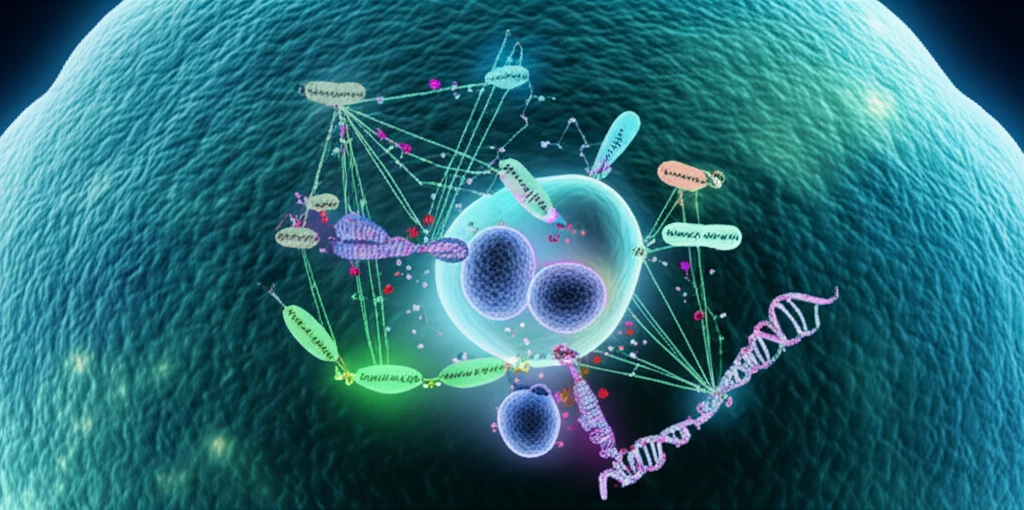
Decoding LncRNA SNHG5: A New Key to Colorectal Cancer?
"Unlocking the Role of LncRNA SNHG5 in Colorectal Cancer Progression: From Cell Growth to Metastasis"
Colorectal cancer (CRC) remains a significant global health challenge, ranking as one of the most prevalent cancer types worldwide. Despite advancements in diagnostic and therapeutic strategies, the complex molecular mechanisms driving CRC progression are not fully understood. This lack of understanding contributes to the persistently high mortality rates associated with advanced stages of the disease. Recent research has focused on the roles of non-coding RNAs, particularly long non-coding RNAs (lncRNAs), in cancer development and progression.
LncRNAs, characterized as RNA molecules longer than 200 nucleotides that do not code for proteins, have emerged as critical regulators of various biological processes, including cell growth, differentiation, and apoptosis. Aberrant expression of lncRNAs has been implicated in numerous cancers, highlighting their potential as therapeutic targets. Among these, LncRNA SNHG5 has garnered attention for its involvement in several types of cancer. However, its specific role and mechanism of action in colorectal cancer have remained elusive until now.
A recent study published in Cancer Biology & Therapy sheds light on the intricate role of LncRNA SNHG5 in colorectal cancer. The researchers investigated how SNHG5 affects cell proliferation, metastasis, and migration in CRC cells, focusing on its interactions with microRNA-132-3p (miR-132-3p) and CREB5, a protein involved in cell growth and survival. This article synthesizes the key findings of this research, providing a comprehensive overview of how SNHG5 influences CRC progression at the molecular level.
How Does LncRNA SNHG5 Influence Colorectal Cancer?

The study begins by examining the expression levels of SNHG5, miR-132-3p, and CREB5 in both CRC tissues and cell lines. The researchers collected 25 pairs of CRC tissue samples alongside matched para-tumor tissues to measure the RNA and protein levels using quantitative real-time PCR (qRT-PCR) and Western blotting. These methods allowed them to quantify the gene expression and protein production in cancer cells compared to normal cells.
- qRT-PCR and Western Blotting: Used to quantify gene expression and protein levels.
- Dual-Luciferase Reporter Assay: Confirmed direct interactions between miR-132-3p and SNHG5 or CREB5.
- RNA Pull-Down Assay: Verified that SNHG5 directly binds to miR-132-3p.
- CCK-8 Assay and Flow Cytometry: Assessed cell proliferation and apoptosis rates.
- Transwell Assay and Scratch Test: Measured metastasis and migration capabilities of CRC cells.
- In Vivo Experiments: Evaluated the effects of SNHG5 on CRC tumor growth in mice.
Future Implications and Therapeutic Potential
These findings highlight the importance of LncRNA SNHG5 as a potential therapeutic target in colorectal cancer. By understanding the molecular mechanisms through which SNHG5 promotes cancer progression, researchers can develop novel strategies to inhibit its activity. Future studies could focus on designing targeted therapies that disrupt the interaction between SNHG5 and miR-132-3p or that directly inhibit CREB5, offering new hope for patients with colorectal cancer.
